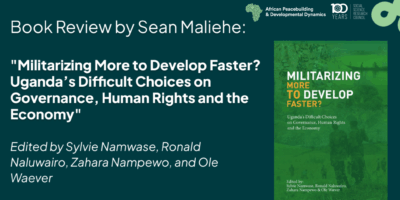Life is precarious, more so for those who live in a neoliberal world. Byung-Chul Han names this lifeworld “the achievement society” and this neoliberal form of precarity “psychopolitics.” As achievement-subjects, we reap pleasure from our own work; we follow our own heart; our job is to be our own boss. This achievement society is fueled by a regime of technological surveillance and the economic scramble to grab our attentions, where “the productive force of human psyche” is harnessed for capital gain at peril of freedom. How free can we be, if we are free to work ourselves to burnout? Where is free will when attention is constantly surveilled by techno-networks of Big Other?
When the corporations and institutions who control our collective imagination are inviting us into despair and exhaustion, I offer this space to envision awesome futures together. Informed by Han’s insight, I reread The Kālāma Sutta and reveal its karmic psychopolitics of courage and hope. It is a karmic psychopolitics because karma means action. Karmic psychopolitics is a Buddhist philosophy of agentless action.
The lens of karmic psychopolitics offers a processual paradigm to understand the self and the world. A processual paradigm takes it as self-evident that the self and world consist of processes and actions. In contrast to the substance-metaphysical question of what there is, processual philosophers ask “what is occurring and ways of occurring.” Their difference can be likened to the debate on whether light is a stream of particles or wave-like vibrations. Following the substance-metaphysical logic, light is deconstructed into its smallest building blocks, a.k.a. photons. Following the processual views, light is diffracted into vibrations of different frequencies. Yet, quantum physics tells us that light is both particle and wave. It further shows that under certain conditions the “uncertainty principle” rules, when individuation of each particle becomes impossible and the only knowables are patterns of probability. Perhaps, the most mind-binding insight from quantum physics is temporality. Whereas in classical physics, moments in time are mutually exclusive, in a quantum world, moments in the past, present, and future might become indistinguishable. Under this paradigm, the only meaningful notions are processes, patterns of processes, relations/consequences of processes.
Similarly, in karmic psychopolitics, commonsense notions such as precarity and well-being, freedom and bondage, the self and world are diffracted into recurring patterns of co-actions (alternatively termed anchoring schemas in social ontology) and aggregated, recurring karmic processes.
Let us reread The Kālāma Sutta, which I see as a Buddhist bullshit detector. The Kālāma people living in the region Kesamutta asked the Buddha: When different ascetics and brahmins come to preach their own teachings while disparaging others, how does one know which teachings to follow? In today’s language: In this age of information overflow, how do we tell bullshit from nonbullshit?
Instead of philosophizing about truth, the Buddha offers a psychopolitical message on how to build lasting friendliness and well-being. First, the Buddha rejects all known epistemic authorities of his day: the first four of oral transmission, lineage, testament, and canonical authority that reject religious epistemology; the next four of logic, inference, reasoned train of thought, and deliberation that reject known philosophical/scientific epistemology; and the last two of appearance of competence and trusting one’s own spiritual guru that reject mythical epistemology.
He then offers a psychopolitical message: The key criteria for figuring out whether a guru is preaching bullshit or not is to ask whether it leads to lasting unfriendliness (ahita) and precarity (dukkha) or lasting friendliness (hita) and well-being (sukha). A reasonable reader would question whether dukkha and sukha are valid sociopolitical notions since the mainstream understanding of dukkha, from the lens of the twelve-link dependent co-arising, squarely positions itself within the lifecycles of a person.
However, a closer examination of three relevant passages suggests another possibility.
What do you think, Kālāmas? When greed (lobha) arises (uppajjamāna) in a person, does this arising give rise to (uppajjati) either friendliness (hita) or unfriendliness (ahita)? (my emphasis)
Unfriendliness, Sir.
A greedy person, overcome by greed, kills living beings, takes what is not given, goes to another’s wife, speaks falsely, and encourages others to do the same. Does that become their lasting friendliness (ahita) and precarity (dukkha)?
Yes, Sir.
This pattern is repeated twice with greed replaced with hatred (dosa) and narcissistic delusion (moha). When reading these passages backward, it is clear that the Buddha makes a diffractive analysis and links the psychological with the sociopolitical.
Diffractive analysis, in its simplest formula, is a recognition of a recurring pattern or anchoring schema that enables one to reconceptualize seemingly stable and substantial existences as related processes of arising and cessation:
imasmiṁ sati idaṁ hoti, imassuppādā idaṁ uppajjati (when this is, that is; when this arises, that arises.)
imasmiṁ asati idaṁ na hoti, imassa nirodhā idaṁ nirujjhati (when this is not, that is not; when this ceases, that ceases.) (my emphasis)
There are two related patterns here. While a commonsense logic portrays categories of being/nonbeing such as “this is” / “this is not” and “that is” / “that is not,” a processual logic diffracts ontological categories into processes of “this arises” / “this ceases” and “that arises” / “that ceases.” While a commonsense logic portrays an ontological relation between beings or nonbeings, a processual logic diffracts relations into co-concurring patterns of processes of “this arises” and “that arises” or “this ceases” and “that ceases.”
In The Kālāma Sūtta, while commonsense logic reduces an unfriendly culture into greedy, hateful, and selfish agents, the diffractive analysis tells a processual story. Lasting unfriendliness and precarity are first diffracted into collective actions of many people violating steps of training (sikkhāpada; commonly translated as “precept”). The arising of collective unwholesome actions is in turn diffracted into shared thinking patterns that naturalize unwholesome action as the norm. These shared thinking patterns are further diffracted into one person’s transgressive actions, which are in turn diffracted into anchoring schemas of afflictive mental patterns of greed, hatred, and narcissistic delusion that arise and then give rise to (uppajjamāna and uppajjanti) unfriendliness and precarity of a person. Thusly, what causes the unwanted culture is not the agents/persons but the recurring patterns of mental afflictions—lobha, dosa, and moha and their consequences.
When we do unwholesome deeds, we become the fire of greed, hatred, and narcissistic delusion. When we do wholesome deeds, we become water to extinguish that fire. Here also lies the reason that I translate moha as “narcissistic delusion”—not to make a philosophical claim about an eternal self or the lack of it, but to accentuate the relational aspects in this message. Lobha, dosa, and moha undermine a kincentric culture: to act non-narcissistically means to acknowledge our existential interdependence (what Thich Nhat Hanh termed “interbeing”) and to act as kin.
Later passages further elaborate how cessation of these three anchoring schemas lead to lasting friendliness and well-being. This sociopolitical dimension of hita–sukha and ahita–dukkha find abundant corroborating evidence in other discourses, which needs a separate study to spell out.
Attentive readers may ask why I translate dukkha as precarity instead of suffering. As incisively analyzed by Jonathan Gold, if we take seriously Pyrrho’s understanding of dukkha as astathmēta (a Greek term means unreliability), then many logical gaps in certain Pāli texts start to make more sense. Some points are worth quoting here.
Q1: How does suffering follow, logically, from impermanence?
A1: It does not. Precariousness follows from impermanence.
…
Q3: Why is poverty said to be the quintessence of suffering?
A3: It is not. Poverty is the quintessence of precarity.
Indeed, suffering, in commonsense English, implies an agent who suffers. If we instead read dukkha as precarity, then other possible meanings emerge: Dukkha can be diffracted into conditions and causes of certain relational patterns, which links the psychological processes with social actions and institutional norms. Further, if dukkha means precarity, then sukha could mean well-being and reliability.
Note that, dukkha encompasses both the unavoidable existential precariousness, such as sickness and old age, and systemic precarity, such as indebtedness and poverty, that are results of human-made social arrangements. Hence, in The Kālāma Sutta, our shared existential precariousness becomes the soil to grow kincentric structures. These structures are not fixed. If the society and the earth may be better off without certain systems we have created, we can change them and change ourselves so to build new kincentric arrangements: “Without inner change, there can be no outer change. Without collective change, no change matters.”
Some readers might object that karmic psychopolitics functions precisely like neoliberal psychopolitics, in that, this reward-punishment system sets up the same logic: As karmic subjects, we reap pleasure from our own wholesome action; we suffer from our own unwholesome action; we follow our own karmic destiny; our task is to take control of our own karma.
However, there is a key difference. As argued by Brook Ziporyn, in the Buddhist theory of action, “the whole point is to escape the dominion of karma, the delusion that grounds the perpetuation of karma, by realizing that purposive intention is always self-defeating.” This exit of karmic domination gestures toward the core of Buddhist philosophy: ontological ambiguity, a universal ambiguity that turns all determinations, certainties, or clarities as temporary, contextualized, and interconditioned disambiguations. Since interconditioned disambiguations only offer local coherence, diffractive analysis is employed as a way to gain a local clarity and is not meant to offer a globally coherent analysis of universal causal relations.
Thusly, the outcome of diffractive analysis is outlined as a hope instead of a destiny: may the friendliest thrive. Here, hope is depicted differently for the lay and noble disciples. For laity like the Kālāmas, a lasting friendly world remains a possible halfway house, conditioned upon their taking refuge and do wholesome deeds. No guarantee, no certainty.
For the noble disciples, arguably, the friendliest since their mind is permeated by boundless friendliness, care, empathetic joy, and equanimity, their only hope is “four consolations” in this very life. No grand plan, no karmic destiny. As The Kālāma Sūtta says:
‘If there is indeed another lifeworld and good and bad actions bear fruits, then, I will be reborn in a good heavenly realm when the body breaks up after death.’ This is the first consolation attained by them.
‘If there is indeed no other worlds and good and bad action do not bear fruits, then, in the very life, I keep myself free from enmity and ill will, [I goes around] undisturbed, and [I take] good care of the self.’ … the second …
‘If indeed people who do bad deeds fall, …’ …the third …
‘If indeed people who do bad deeds do not fall,’ … the fourth …
Instead of definitive rewards or punishments, all that the noble disciples can attain is an awareness of no-fault, regardless of whether there is another world where good and bad deeds bear fruits or whether bad things happen to people who do bad deeds. Note that assāsa (consolation) literally means “exhalation”—consolation is nothing more than a sigh of relief. Hence, practicing hope requires courage because hope is fundamentally at odds with the neoliberal logic of achievement: There is no-thing to gain.
In contrast to the deadly dream of “the survival of the fittest,” the Buddha and the Kālāmas alike envision a friendlier future. Because hope is a practice, the halfway house of lasting friendliness and well-being can be built without a predetermined plan and can only be sustained by wholesome co-actions. This halfway house can also be undone if people choose to act otherwise. It is a society that reflects how we would like to be treated in moments of vulnerability, be it existential precariousness such as aging and sickness or systemic precarity such as poverty and indebtedness. The logic behind this optimism is simple: Because those moments come to us all, it is better to build a kincentric culture that offers equal support for life and liberation. Thus, The Kālāma Sutta ends with a call to practice courage and hope: May the friendliest thrive.













